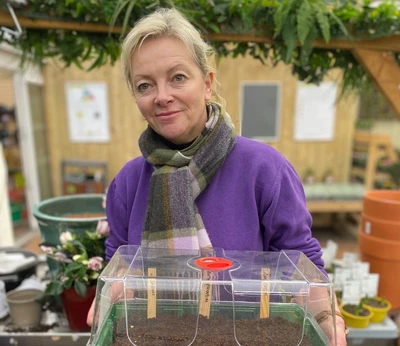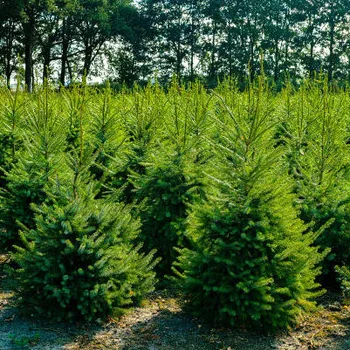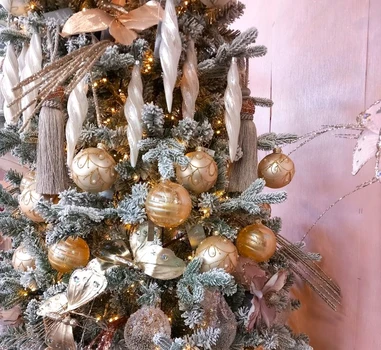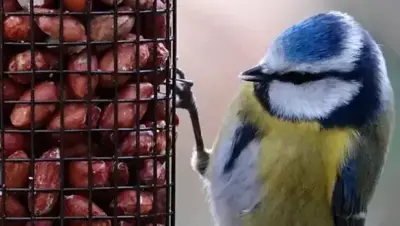
It has taken me a while to write my next blog, partly because I have been busy, and partly because we have had a slightly sad time in early April. It is something that is common and is relevant, so I thought I should write about it.
Poorly Chaffinches
In early April, we noticed some very sluggish Chaffinches hanging about. They did not seem to move about quickly like birds normally do, and did not scare off quickly. One would stand close to our pond for long periods of time, occasionally trying to drink. The birds looked larger than normal as their feathers were “fluffed-up”.

Fluffed up Chaffinch with Trichomonosis
We looked this up and it became clear we had a Trichomonosis (or Canker) outbreak. This is, unfortunately, reasonably common and especially affects finches, particularly Greenfinches (which is why there are so few of them now) and Chaffinches.
I think it is better to let the RSPB website explain properly – please see below an excerpt from their website.
Trichomonosis (or Canker) – RSPB Website
Trichomonas gallinae affects bird’s digestive system. It typically affects finches, and doves and pigeons. Any bird can catch the infection, but being bird specific, it does not pass on to mammals, including humans.
Trichomonosis causes lesions in the throat of the infected bird, which makes it progressively harder for the bird to swallow its food. In addition to showing signs of general illness such as lethargy and fluffed-up plumage, affected birds may regurgitate food, have difficulty swallowing or show laboured breathing. Finches frequently have matted wet plumage around the face and beak, and uneaten food in and around the beak. Sometimes it is possible to see swelling in the throat area of an infected bird and it may stretch its neck in discomfort.
The infection is spread as birds feed one another with regurgitated food during the breeding season, and through food and drinking water contaminated with freshly regurgitated saliva. Sick birds, unable to swallow, will spit out food particles, which then carry the infection. Trichomonas is vulnerable to desiccation and cannot survive for long periods in the open outside a bird.
The higher the concentration of birds at a feeding station, the greater the chance of another bird exposing itself to the infection.
If a number of birds show symptoms of trichomonosis, it is recommended to temporarily stop putting out food, and leave bird baths dry until no further sick or dead birds are found in the garden. This will help to disperse the feeding birds and reduce contact between sick and healthy individuals, thus slowing down or halting the outbreak.
You can read more here: https://www.rspb.org.uk/birds-and-wildlife/advice/how-you-can-help-birds/disease-and-garden-wildlife/diseases-in-garden-birds/
What did we do?
There was very little we could do for the already ill Chaffinches. The key was to try to stop the disease spreading and affecting more birds – so we tried to follow the RSPB’s advice.
Clearing Up
- Took all the feeders in for a week, and took the opportunity to clean them thoroughly, as well as throwing away any food left in them.
- Took all the Squirrel-proof baffles down and cleaned them thoroughly too
- Tried to clear up any obvious bird food on the ground
- Poured boiling water over the ground under the location of the bird feeders
- Removed the dead branches we had placed under the feeders, and poured boiling water over them too
- Got some mulch (from a lovely local Garden Centre I know) and spread it round over the ground under the feeders to try to prevent birds finding any infected morsels
New Feeding Plan
- I’d broken the rule about concentrating feeders too much, which brings large numbers of birds together and increases the risk of the spread of disease
- I’ve now selected 8 separate locations around the garden for the feeders. They are spread out and are some distance from each other
- I then selected the 4 most popular feeders I have, that were also easy & practical to clean
- Now I move the 4 around, so that none stay in a location long enough to allow large accumulations of dropped food on the ground
- I have committed to be better at cleaning the feeders regularly
- Actually, it is really interesting to see the birds finding the feeders very quickly after they are moved, or rushing off to the other side of the garden to get their favourite feed
- I will continue with this set-up, as it makes much more sense and keeps birds away from each other whilst still feeding them
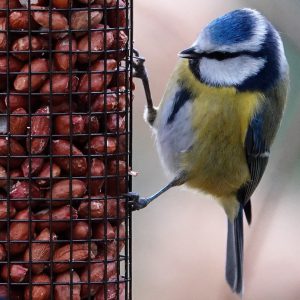
To cheer us all up: one of our lovely Blue Tits on Peanut Feeder
What Have I Learnt?
- Don’t put lots of feeders in one place, especially if the birds then congregate in trees and bushes all around
- Spread feeders around and nicely space them out
- Move feeders regularly if possible, so there is less chance of food accumulating underneath
- Clean feeders regularly
- Look out for diseased birds and act accordingly
- I hope I am making it a bit harder and more interesting for the birds to find the food that they want, because it is in a different place each day!
Selecting Bird Feeders
This whole sad story brings me onto a bit of a bug-bear of mine: Bird Feeders and their design.
In my humble opinion a bird feeder needs to be designed for all of the following at a minimum:
- Hold the bird food without it spilling
- Allow the desired bird species to feed easily and safely
- Keep the rain out of the top (thus stopping food going off or getting damp)
- Drain any feeding trays easily, so the food does not sit in the damp
- Be easy to clean properly (which might mean being easily taken apart and put together)
- Some might have additional needs – like being squirrel proof or similar
In my experience, a lot of bird feeders on the market fail to achieve numbers 3, 4 & 5; especially the more gadget-filled ones that cannot be taken apart at all. Many feeders have tops that do not keep rain out, because the top does not overhang enough. Most fail by being hard (sometimes impossible) to take apart, so that they are extremely difficult to clean.
I am very pleased to say, that since Millbrook changed its main Bird Food & Feeder supplier last summer to Henry Bell, the feeders we offer are among the best I have seen.
The Henry Bell feeders I have used tend to have nice “bird-friendly” perches, a decent overhanging top and, crucially, they can be dismantled and thoroughly washed.
So next time you are considering a purchase of a Bird Feeder, do check to see it does what it needs to in order to keep your wild birds safe and well, as well as well fed.
By Ben Woodhouse

